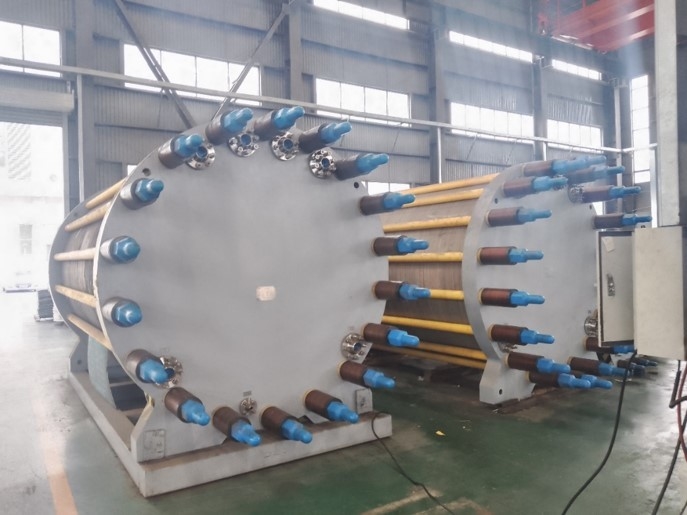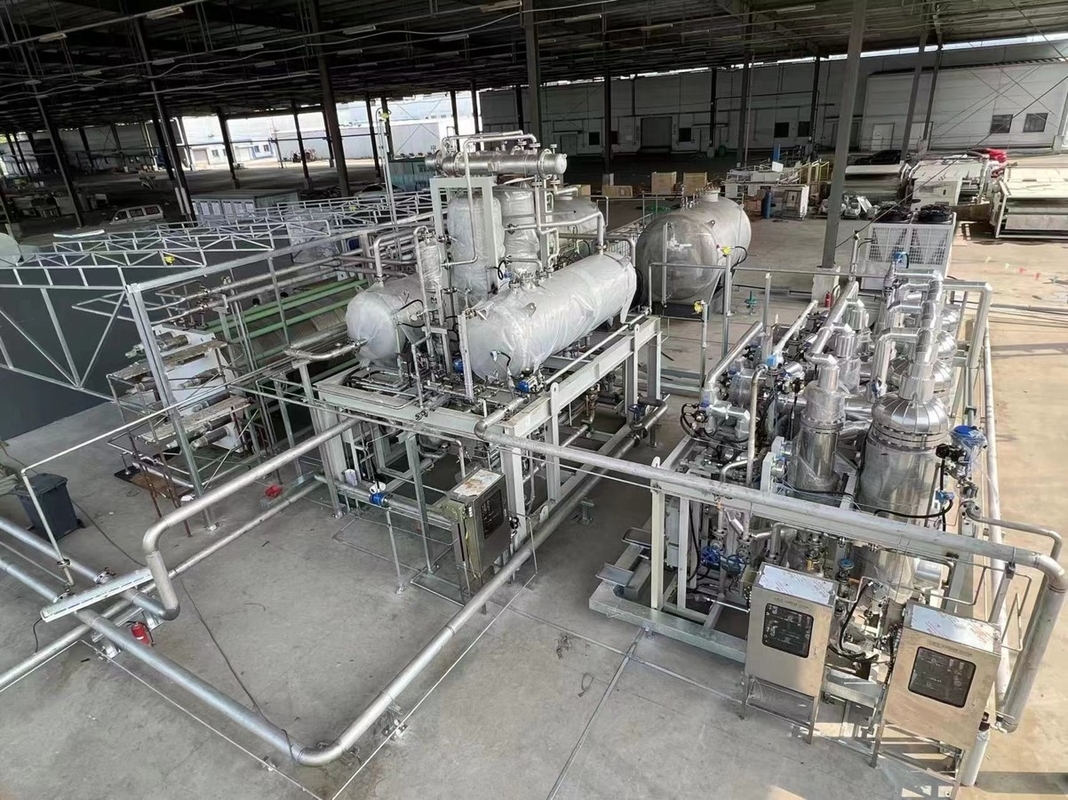Green Hydrogen Generator, Water Electrolyzer, High Purity Industrial Application
Green Hydrogen Energy
With the gradual increase in the use of clean energy, its intermittent nature makes the demand for energy storage very urgent. Hydrogen energy is a better bridge. The main advantages are: first, hydrogen electricity can be converted efficiently through PEM; second, hydrogen has a relatively high energy density and is relatively easy to store; third, hydrogen conversion to electricity has the potential for large-scale application.
At present, in the electrolysis of water hydrogen production technology, alkaline electrolysis of water (AWE) and proton exchange membrane electrolysis of water (PEMWE) have been gradually industrialized, while high-temperature solid oxide Hydrogen (AEMWE) is still in the pilot product phase
Process and product introduction
Water H2O + Power = Hydrogen H2 (+ Oxygen O2)
Hydrogen production up to 1300Nm3/hr, per Single stack
Gas purity without purification system 99.7%±0.2% (Water saturated)
After purification Up to 99.999%
World-leading technology
High Efficiency/Low Consumption
Reliable Performance
Solid Quality & Performance
Less footprint

Hydrogen can be used much more widely.
Today, hydrogen is used mostly in oil refining and for the production of fertilizers. For it to make a significant contribution to clean energy transitions, it also needs to be adopted in sectors where it is almost completely absent at the moment, such as transport, buildings and power generation.
The Future of Hydrogen provides an extensive and independent survey of hydrogen that lays out where things stand now; the ways in which hydrogen can help to achieve a clean, secure, and affordable energy future; and how we can go about realizing its potential.
Hydrogen can be extracted from fossil fuels and biomass, from water, or from a mix of both. Natural gas is currently the primary source of hydrogen production, accounting for around three-quarters of the annual global dedicated hydrogen production of around 70 million tones. This accounts for about 6% of global natural gas use. Gas is followed by coal, due to its dominant role in China, and a small fraction is produced from the use of oil and electricity.
The production cost of hydrogen from natural gas is influenced by a range of technical and economic factors, with gas prices and capital expenditures being the two most important.
Fuel costs are the largest cost component, accounting for between 45% and 75% of production costs. Low gas prices in the Middle East, Russia, and North America give rise to some of the lowest hydrogen production costs. Gas importers like Japan, Korea, China, and India have to contend with higher gas import prices, and that makes for higher hydrogen production costs.
While less than 0.1% of global dedicated hydrogen production today comes from water electrolysis, with declining costs for renewable electricity, in particular from solar PV and wind, there is growing interest in electrolytic hydrogen.
With declining costs for renewable electricity, in particular from solar PV and wind, interest is growing in electrolytic hydrogen and there have been several demonstration projects in recent years. Producing all of today’s dedicated hydrogen output from electricity would result in an electricity demand of 3 600 TWh, more than the total annual electricity generation of the European Union.
Under the background of the "3060 carbon peak and carbon neutrality" policy, the installed capacity of clean energy such as wind power will continue to grow rapidly, and green hydrogen may usher in a period of rapid development. According to the forecast of China Hydrogen Energy Alliance, by 2050, the proportion of hydrogen production from renewable energy electrolysis will reach 70%.
In 2020, China announced its ambition to be carbon neutral by 2060. The use of hydrogen will be important, especially in China's huge industrial sector which accounts for 60% of the final energy demand. The use of hydrogen as an alternative to fossil fuels received attention even before China's net-zero commitment, as it was seen as a means to address urban air quality problems.

Product Introduction
The water electrolysis hydrogen (Oxygen) plant is equipment that electrolyzes water to produce hydrogen and oxygen by using lye as an electrolyte.
Alkaline electrolyzed water
The largest and most commercialized water electrolysis hydrogen production technology, the largest domestic gas production per unit is 100050 m3/h.
Advantages: Simple structure, mature technology, non-precious metal catalyst, low cost, high degree of commercialization
shortcoming: Electrolyte leakage pollutes the environment, asbestos diaphragm causes cancer, poor dynamic response, limited current density
Solid oxide electrolyzed water
Using water vapor electrolysis has the highest energy efficiency, but its disadvantages such as high-temperature conditions and slow startup limit its application scenarios and are in the experimental stage.
advantage: High efficiency, expensive precious metal catalyst, high conversion efficiency
Shortcoming: Additional heat source is required, high-temperature conditions increase cost, slow start-up, high-temperature materials are easy to age
PEM electrolyzed water
The maximum gas output of a single PEM electrolyzer in China is 50m³/h, and the cost of materials such as precious metal catalysts is high, and it has not been used on a large scale.
advantage: Compact structure, constant electrolyte concentration, strong adaptability to fluctuating energy, fast cold start
shortcoming: High cost, low degree of commercialization, high power consumption, and catalysts are easily poisoned by metal ions
|
|
AWE/ALK
|
PEM
|
AEM
|
SOE
|
|
Electrolyte Separator
|
30% KOH Asbestos Film
|
Proton Exchange Membrane
|
Anion Exchange Membrane
|
Solid Oxide
|
|
Current Density (A-cm2)
|
<0.8
|
1~4
|
1~2
|
0.2~0.4
|
|
Power Consumption/Efficiency/(Kw-h N'-m )
|
4.5~5.5
|
4.0~5.0
|
-
|
Expected efficiency Is About 100%
|
|
Working Temperature/℃
|
≤90
|
≤80
|
≤60
|
800
|
|
Purity Of Hydrogen Production
|
99.80%
|
99.99%
|
99.99%
|
One
|
|
Relative Device Size
|
1
|
~1/3
|
-
|
-
|
|
Operating Characteristics
|
The Pressure Difference Needs To Be Controlled, And The Gas Production Needs To Be De-alkalized
|
Quick Start And Stop, Water Vapor Only
|
Quick Start And Stop, Water Vapor Only
|
Inconvenient to Start And Stop, Only Water Vapor
|
|
Maintainability
|
Strong Alkali Corrosion
|
Non-corrosive Medium
|
Non-corrosive Medium
|
-
|
|
Environmentally Friendly
|
Asbestos Film is Dangerous
|
No Pollution
|
No Pollution
|
-
|
|
Technology Maturity
|
Fully Industrialized
|
Commercialize
|
Laboratory Stage
|
Laboratory Stage
|
|
Stand-alone Scale/(N-m3-h1)
|
≦1000
|
≦500
|
-
|
-
|
Alkaline Water Electrolyzer Models and Specification.
| Model |
Maximum hydrogen production
(Nm³/h) H2
|
Maximum oxygen production
( Nm³/h) O2
|
Crude hydrogen purity ( % )
|
Crude oxygen purity ( % )
|
Purity of hydrogen after purification ( % )
|
DC (A) |
DC voltage
(V)DC |
Rated DC power consumption: kWh/ N m 3 ·H2 |
Total pure water consumption L/h |
| GFSDJ-50/3.2 |
50 |
25 |
99.8 |
98.5 |
99.999 |
1250 |
192 |
4.5~4.6 |
50 |
| GFSDJ-200/1.6 |
200 |
100 |
99.8 |
98.5 |
99.999 |
7000 |
140 |
4.5~4.6 |
200 |
| GFSDJ-500/1.6 |
500 |
250 |
99.8 |
98.5 |
99.999 |
15400 |
168 |
4.5~4.6 |
500 |
| GFSDJ-600/1.6 |
600 |
300 |
99.8 |
98.5 |
99.999 |
15400 |
190 |
4.5~4.6 |
600 |
| GFSDJ-800/1.6 |
800 |
400 |
99.8 |
98.5 |
99.999 |
15400 |
252 |
4.5~4.6 |
800 |
| GFSDJ-1000/1.6 |
1000 |
500 |
99.8 |
98.5 |
99.999 |
15400 |
316 |
4.5~4.6 |
1000 |
Product advantage:
Features
Mature and advanced technology
Lower power consumption and cost
High pressure and purity
No pollution and zero emissions
Technical Index
Hydrogen capacity:3 ~1300Nm3/hr
Purity: 99.9995%
Oxygen Content: ≤2PPM
Dew point: ≤-70℃
High-efficiency Non-Asbestos Membrane
Product Features.
1. Dynamic response ~Quick
2. System modularity
3. Different power connection methods
4. Mature Technology
5. Stable Performance, Long Life
6. Equipment costs and operating costs have room to decrease
DC power consumption is Measured At 4.2kw·h/M3
7. Wide range adjustment, the power Supply Adjustment Range is 10-400% Between
Control System
• Simple operation & high reliability
• PLC system, fully-automatic control
• Remote controllable via cellphone App, online monitoring

 Your message must be between 20-3,000 characters!
Your message must be between 20-3,000 characters! Please check your E-mail!
Please check your E-mail!  Your message must be between 20-3,000 characters!
Your message must be between 20-3,000 characters! Please check your E-mail!
Please check your E-mail! 

